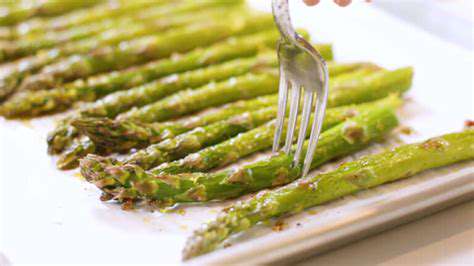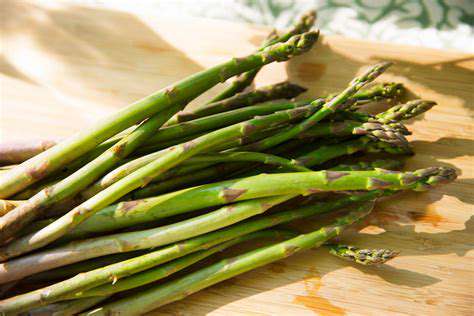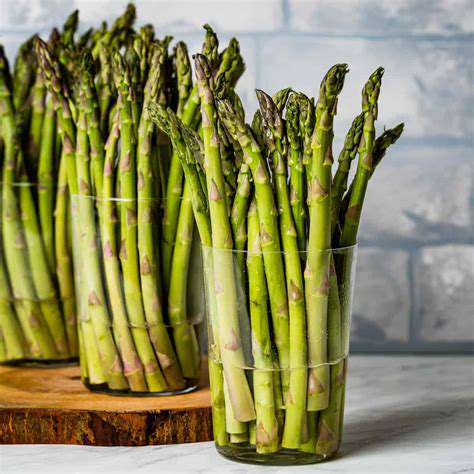How to Store Asparagus: Keep Them Fresh
Jun 25, 2025 / btwgardenmachine/

Proper Harvesting Techniques
To ensure the best quality asparagus, harvest the stalks when they reach 6-8 inches in height. Cutting at the base with sharp tools prevents damage to the root system, promoting future growth. Avoid tearing the stalks, as this accelerates spoilage. Timing matters – too early results in less tender spears, while waiting too long yields woody texture.
Pre-Storage Cleaning and Trimming
Cold water rinsing removes dirt and maintains food safety. After washing, trim one to two inches from the bottom to eliminate tough fibers. This simple step significantly improves both texture and presentation.
Blanching for Preservation
Two to three minutes in boiling water preserves the vibrant green color and stops enzymatic browning. The ice bath that follows is equally important, locking in crispness and texture. This technique works wonders for maintaining quality.
Freezing Asparagus for Long-Term Storage
Flash-freezing on parchment-lined sheets before bagging prevents clumping. Date labeling becomes crucial for inventory management when storing frozen produce long-term. This method retains quality for months when done properly.
Vacuum Sealing for Extended Freshness
By removing oxygen, vacuum sealing dramatically slows deterioration. This advanced method can triple the shelf life compared to conventional storage while preserving texture and flavor exceptionally well.
Proper Refrigerator Storage
The crisper drawer's humidity control helps maintain freshness. Adding a paper towel absorbs excess moisture, preventing the sogginess that ruins texture. Proper refrigeration keeps spears crisp for up to a week.

Storing Asparagus in the Pantry: A Quick-and-Easy Guide
Proper Handling for Optimal Freshness
Immediate removal of damaged spears and gentle washing preserves quality. Angle-cutting the ends enhances water absorption during storage. Proper drying prevents microbial growth that causes spoilage.
Choosing the Right Storage Method
The water glass method works well for short-term needs, while airtight containers suit longer storage. Refrigeration in the crisper drawer with proper sealing provides the best balance of humidity and air circulation.
Refrigeration Techniques for Extended Storage
Single-layer arrangement prevents compression damage. Oxygen removal slows oxidative deterioration, while damp paper towels maintain ideal moisture levels without causing sogginess.
Freezing Asparagus for Future Use
The blanching-and-shocking process preserves color and texture remarkably well. Thorough drying before freezing prevents ice crystal formation that damages cell structure during storage.
Storage Duration and Signs of Spoilage
Vigilance for color changes, texture loss, or mold prevents food safety issues. While refrigeration extends freshness, quality diminishes after ten days even under ideal conditions.
Tips for Maximum Asparagus Freshness

Proper Harvesting and Handling
The 6-8 inch harvesting window captures peak tenderness. Immediate cooling after harvest slows respiration rate, the key to prolonged freshness. Careful handling prevents bruising that accelerates deterioration.
Storage Techniques for Optimal Preservation
Crisper drawers maintain the 90-95% humidity asparagus craves. The ice cube trick provides cooling without waterlogging when used properly in sealed containers.
Prepping Asparagus for Lasting Flavor
Thorough cleaning removes surface contaminants while proper trimming eliminates bitter compounds concentrated in the woody ends. These steps enhance both safety and palatability.
Blanching for Future Use
The brief heat treatment deactivates enzymes responsible for flavor and nutrient loss. Precise timing ensures texture preservation without overcooking.
Freezing Asparagus for Extended Freshness
Proper blanching before freezing makes all the difference in quality retention. Portion freezing allows for convenient use while minimizing thaw-refreeze cycles that degrade quality.
Vacuum Sealing for Enhanced Preservation
This method creates an oxygen-free environment that dramatically slows all spoilage mechanisms. While requiring special equipment, the extended shelf life justifies the investment for frequent asparagus users.